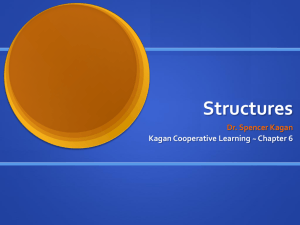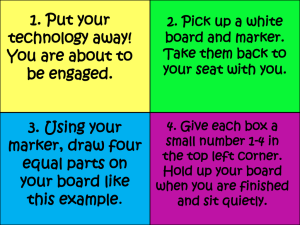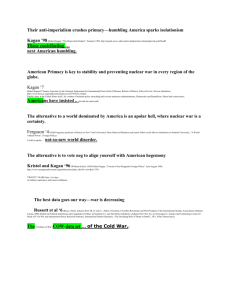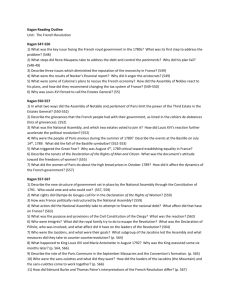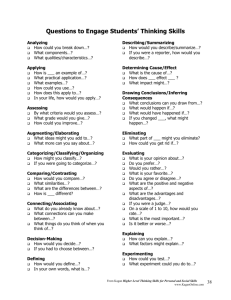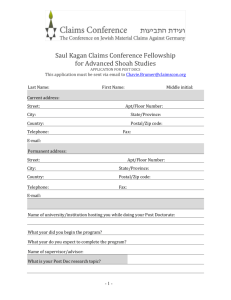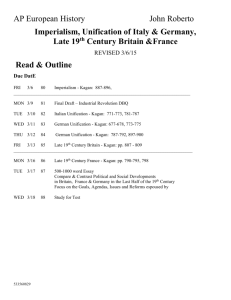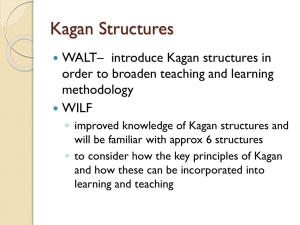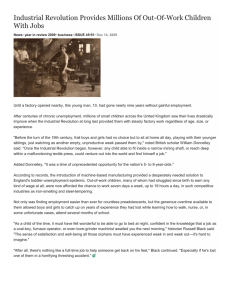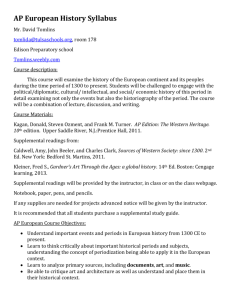Kagan Reading Outline Unit: The Industrial Revolution Kagan 455
advertisement
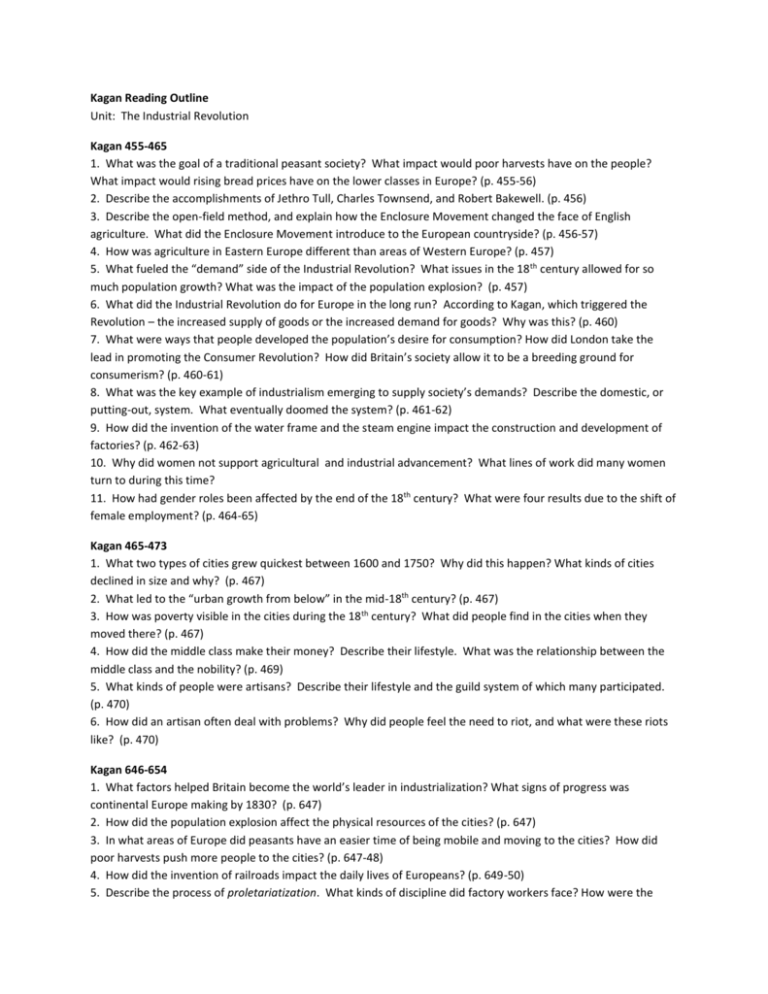
Kagan Reading Outline Unit: The Industrial Revolution Kagan 455-465 1. What was the goal of a traditional peasant society? What impact would poor harvests have on the people? What impact would rising bread prices have on the lower classes in Europe? (p. 455-56) 2. Describe the accomplishments of Jethro Tull, Charles Townsend, and Robert Bakewell. (p. 456) 3. Describe the open-field method, and explain how the Enclosure Movement changed the face of English agriculture. What did the Enclosure Movement introduce to the European countryside? (p. 456-57) 4. How was agriculture in Eastern Europe different than areas of Western Europe? (p. 457) 5. What fueled the “demand” side of the Industrial Revolution? What issues in the 18 th century allowed for so much population growth? What was the impact of the population explosion? (p. 457) 6. What did the Industrial Revolution do for Europe in the long run? According to Kagan, which triggered the Revolution – the increased supply of goods or the increased demand for goods? Why was this? (p. 460) 7. What were ways that people developed the population’s desire for consumption? How did London take the lead in promoting the Consumer Revolution? How did Britain’s society allow it to be a breeding ground for consumerism? (p. 460-61) 8. What was the key example of industrialism emerging to supply society’s demands? Describe the domestic, or putting-out, system. What eventually doomed the system? (p. 461-62) 9. How did the invention of the water frame and the steam engine impact the construction and development of factories? (p. 462-63) 10. Why did women not support agricultural and industrial advancement? What lines of work did many women turn to during this time? 11. How had gender roles been affected by the end of the 18th century? What were four results due to the shift of female employment? (p. 464-65) Kagan 465-473 1. What two types of cities grew quickest between 1600 and 1750? Why did this happen? What kinds of cities declined in size and why? (p. 467) 2. What led to the “urban growth from below” in the mid-18th century? (p. 467) 3. How was poverty visible in the cities during the 18 th century? What did people find in the cities when they moved there? (p. 467) 4. How did the middle class make their money? Describe their lifestyle. What was the relationship between the middle class and the nobility? (p. 469) 5. What kinds of people were artisans? Describe their lifestyle and the guild system of which many participated. (p. 470) 6. How did an artisan often deal with problems? Why did people feel the need to riot, and what were these riots like? (p. 470) Kagan 646-654 1. What factors helped Britain become the world’s leader in industrialization? What signs of progress was continental Europe making by 1830? (p. 647) 2. How did the population explosion affect the physical resources of the cities? (p. 647) 3. In what areas of Europe did peasants have an easier time of being mobile and moving to the cities? How did poor harvests push more people to the cities? (p. 647-48) 4. How did the invention of railroads impact the daily lives of Europeans? (p. 649-50) 5. Describe the process of proletariatization. What kinds of discipline did factory workers face? How were the lives of urban artisans and textile workers who resisted the factory system? (p. 650-51) 6. What was confection? How did this practice affect the skill level of workers in the factory? (p. 651) 7. What were the goals of the Chartists? How successful was the movement, and what was its long-term legacy? (p. 651, 654) Kagan 654-662 1. How did the family economy work in the domestic system? What significant change happened in 1820-30? Why would factories want to employ unmarried women and children? (p. 654, 656) 2. What were the provisions of the 1833 Factory Act? How did this act further affect family life? (p. 656) 3. What did Parliament declare in 1847, and what impact did it have on gender roles? (p. 656) 4. How did the economic role of the family change through this process? What impact would it have on children overall? (p. 656) 5. What paradox did the impact of the factory have on women? (p. 657) 6. What was the most likely occupation for a young woman? Describe how the idea of marriage and the daily work of a married woman changed through this period. (p. 658) 7. What kinds of things did cities become associated with? Describe the origins of the professional police force. Why were the British opposed to police at first? (p. 660) 8. Describe the Auburn system and Philadelphia system as a means of prison reform.

